The weekend roast is a fine tradition, one that's worthy of preserving. Unfortunately, it also makes for a lot of cooking and cleaning, and sometimes it's hard to fit those into a busy schedule. Oven bags made by Reynolds and others can help on both fronts. They tend to shorten the cooking time for a roast or a turkey, and -- because the bag neatly traps the cooking juices, keeping them out of the pan -- speed cleanup as well.
Basic Preparation
There's little difference between roasting with a bag and without one, but you'll need to follow a few simple steps.
Shake open the oven bag and spoon in a tablespoon of flour.
Twist the bag to trap air inside and keep it inflated, then shake it to coat the inside with flour. Empty out any surplus -- there's usually very little -- then place the bag in a roasting pan.
Slide the meat or poultry inside, then gather up the open end of the bag and twist it to make a seal.
Close the end of the bag with the supplied nylon tie, and cut a half-dozen small slits in the top of the bag to let the heated air escape.
At this point, your meal is ready for the oven.
What to Expect
The Reynolds bag creates a favorable microclimate around your roast, trapping steam to keep the air moist and limit evaporation. Moist air conducts heat more effectively than the dry air in your oven, so your roast -- or turkey, or chicken -- cooks faster, and as a bonus retains more moisture. The downside is that the trapped steam inhibits browning and crisping, so roasts will be paler, and chickens or small turkeys won't develop a crisp, golden skin.
A Little Finesse
The shortcomings of oven bags can be countered with a bit of extra preparation. In the case of roasts, you can give them a deeply browned surface -- with all the savory flavors that result -- by searing them first in a hot skillet or Dutch oven. With a small turkey or chicken, remove it from the bag near the end of its roasting time and transfer it to a new pan. A few minutes in a very hot oven, 450 to 500 F, will crisp and brown the already-cooked skin pretty effectively. Alternatively, brushing the bird with melted butter before it goes into the bag can aid browning.
Don't overlook the opportunity to enhance your meal. Add a mixture of onions, carrots and celery -- mirepoix, to use the French term -- to the bag to flavor the drippings for gravy, or sliced lemons and fresh herbs to perfume a chicken. A cup of broth or a splash of wine can help cook tough chuck or brisket to lush tenderness, adding moisture and providing the basis for an excellent sauce.
Not Just for Meat
Oven bags aren't only useful for meats. Filling a bag with root vegetables makes for an easy side dish, one that doesn't require any stovetop space. Just place the vegetables and their bag in a second pan alongside the roast, or they can even share a single large roaster.
You can even bake bread inside a bag, where the trapped steam will help make the loaves extra-high and crusty. Either place the bread inside the bag in pans, or nestle a shaped free-form round or oblong loaf inside the bag after its first rising. Once the bread has risen a second time, bake it normally. Depending on the size of your loaf, it might be done a few minutes sooner than usual.
Related Articles

How to Cook Meat Loaf in an Oven Bag
How to Cook Prime Rib Roast in a ...

Baking Pork Tenderloin, Potatoes & ...

How to Cook a Roast in a Bag

How to Roast a Whole Chicken in a ...
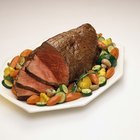
How to Cook a Sirloin Tip Roast in a ...

How to Make Pot Roast in a Cooking Bag
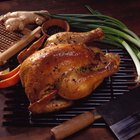
How to Marinate Roast Chicken
How to Cook a Brisket in a Bag
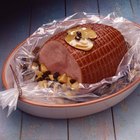
Should I Glaze Ham if I'm Baking in a ...
How to Cook Chuck Roast in a Baking Bag

Does a Roaster Oven Cook Faster Than ...
Difference Between Cooking in a Regular ...

Should I Glaze Ham if I'm Baking in a ...
How to Slow Cook a Pot Roast With Beef ...

How Do Cooking Bags Shorten Cooking ...
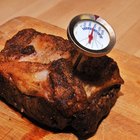
How to Cook Bottom Round Roast in a ...
Baking Pork Tenderloin, Potatoes & ...
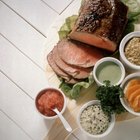
How to Cook a Roast in a Browning Bag ...
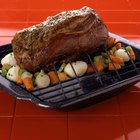
How to Cook a Whole Sirloin Tip Beef ...
References
Writer Bio
Fred Decker is a trained chef and prolific freelance writer. In previous careers, he sold insurance and mutual funds, and was a longtime retailer. He was educated at Memorial University of Newfoundland and the Northern Alberta Institute of Technology. His articles have appeared on numerous home and garden sites including GoneOutdoors, TheNest and eHow.